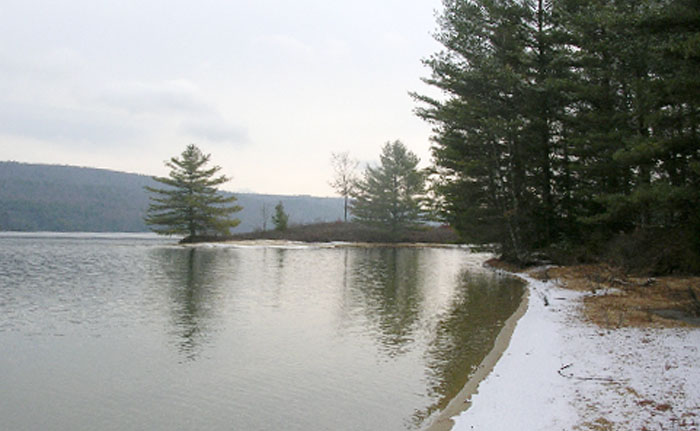A Brief History |
Management and Hydrology |
Destructive Species |
Our Project |
Home |
The Quabbin Reservoir is the largest body of water in the Commonwealth of Massachusetts. Built between 1930 and 1940, it is the primary water supply for Boston. It has an aggregate capacity of 412 billion U.S. gallons (1.56 km³) and an area of 38.6 square miles (99.9 km²). Quabbin Reservoir water flows to the Wachusett Reservoir using the Quabbin Aqueduct. The Quabbin watershed is managed by the Massachusetts Department of Conservation and Recreation; the water supply system is operated by the Massachusetts Water Resources Authority. The Winsor Dam and the Goodnough Dike form the reservoir from impoundments of the three branches of the Swift River. The Quabbin Reservoir is part of the Chicopee River Watershed.
Fishing is allowed in designated areas in the northern portions of the reservoir. There is a visitor center south of the reservoir, as well as an observatory tower, the Enfield Lookout. This area is accessible by car from the south using State Route 9. The reservation is a popular spot for hiking and other outdoor activities. This area was formerly part of the town of Enfield, which was annexed by Belchertown. (from Wikipedia.org)
To view the video that we made as an introduction to the Quabbin Reservoir, click here.
